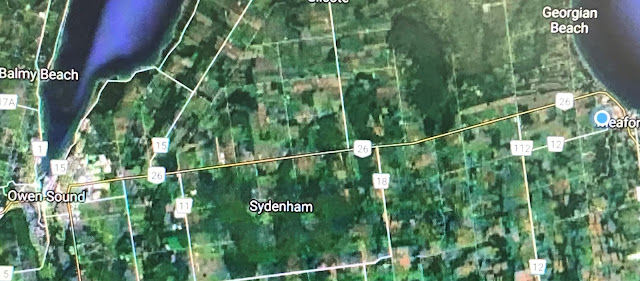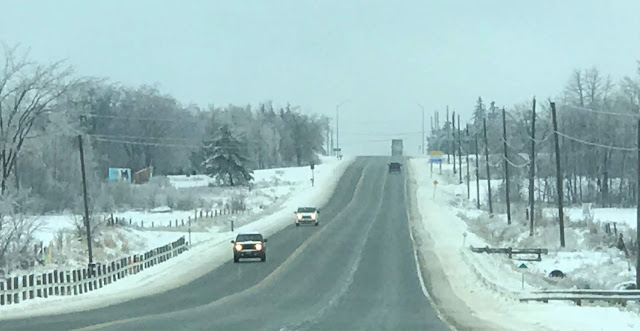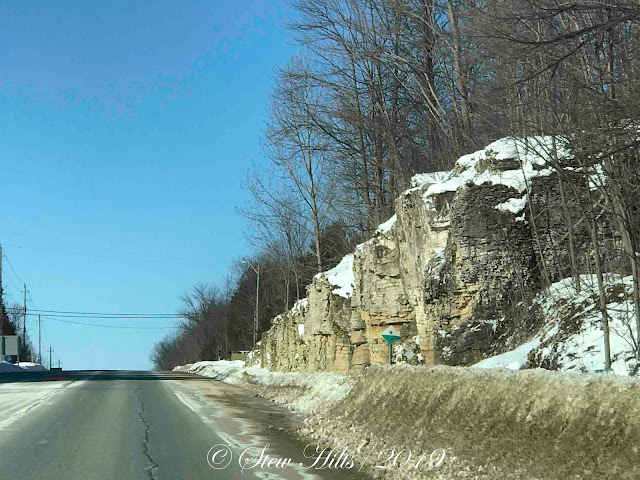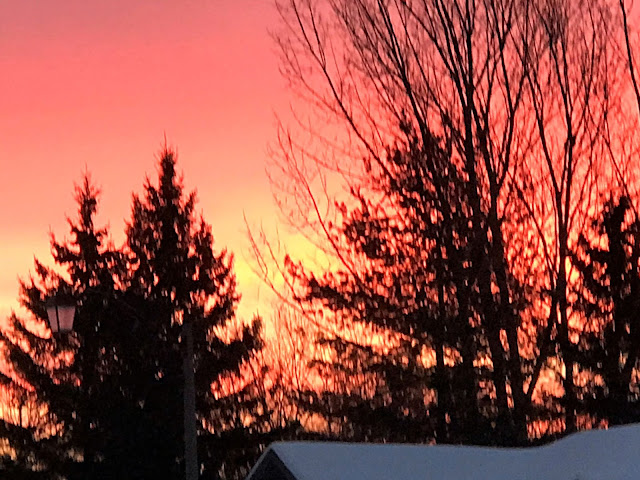You've heard me top about apple growing around here before. The Vail Orchard is the closest on-farm apple outlet that we stop at, but there are several others available. We get to know what apple varieties we like best, and we always buy them locally.
This map shows the landscape along Highway 26 from here to Owen Sound, a 'physiography' map. As you can see, there's a big yellow crescent around the town of Meaford. This is the old lake-bottom of post-glacial Lake Algonquin, old sand and gravel deposits that provide the ideal well-drained soil for apple trees. The shoreline 11,000 years ago followed that bright red line which are old beach deposits. The Vail Orchard is located right where you see that number 26 in a small circle.
This is the view from the highest point looking back at that flat lake-bottom extending west of Meaford. The Vail Orchard is down there on the right in the distance.
This provides excellent flat, well-drained soil for the apple orchards, here some of the high-density trees planted in recent years.
If you follow the map to the east you find the very same thing around Thornbury, the other nearby apple growing area. These two yellow patches of soil make Grey County the highest apple producing region in Ontario.
This is the unique Red Prince orchard south of Thornbury, the first high-density orchard planted in the region. I'm eating Red Price apples these days; they're a late apple which are excellent over the winter and even into spring and summer.
That high density planting is spreading rapidly here, as shown in this very blurry picture of a brand new orchard across the road where a traditional orchard was torn out and replaced with this.
The other factor is microclimate. The deep cold waters of Georgian Bay only warm up slowly, so apple trees normally blossom two weeks later here in the spring. This reduces the risk of them being caught in a late frost. In the fall the water is relatively warm which delays frost at that end of the season.
So apples are the best example of a relationship between soils, climate and land use along this road. Hope you learned something interesting.

















































